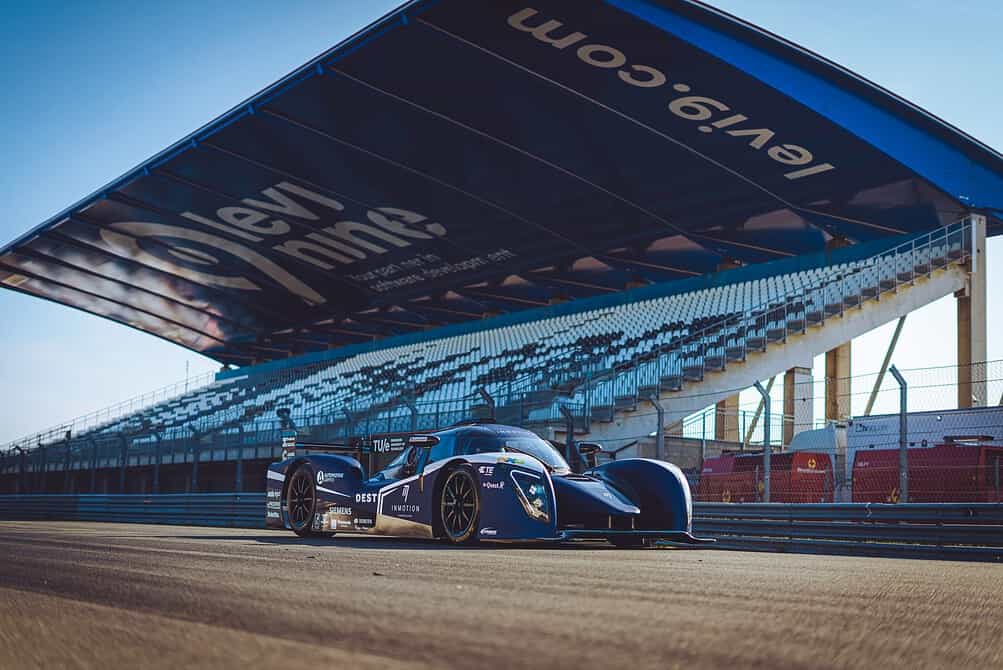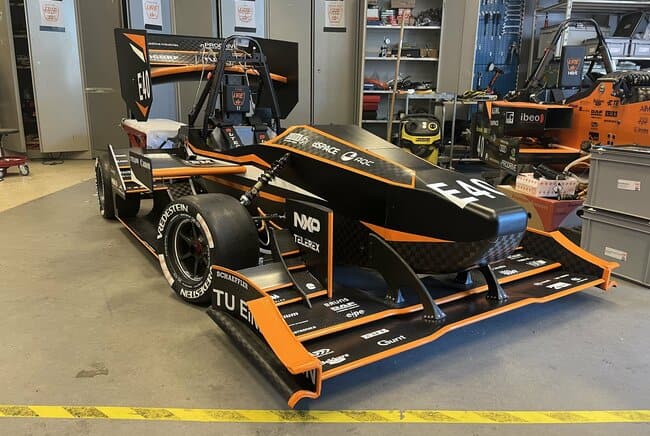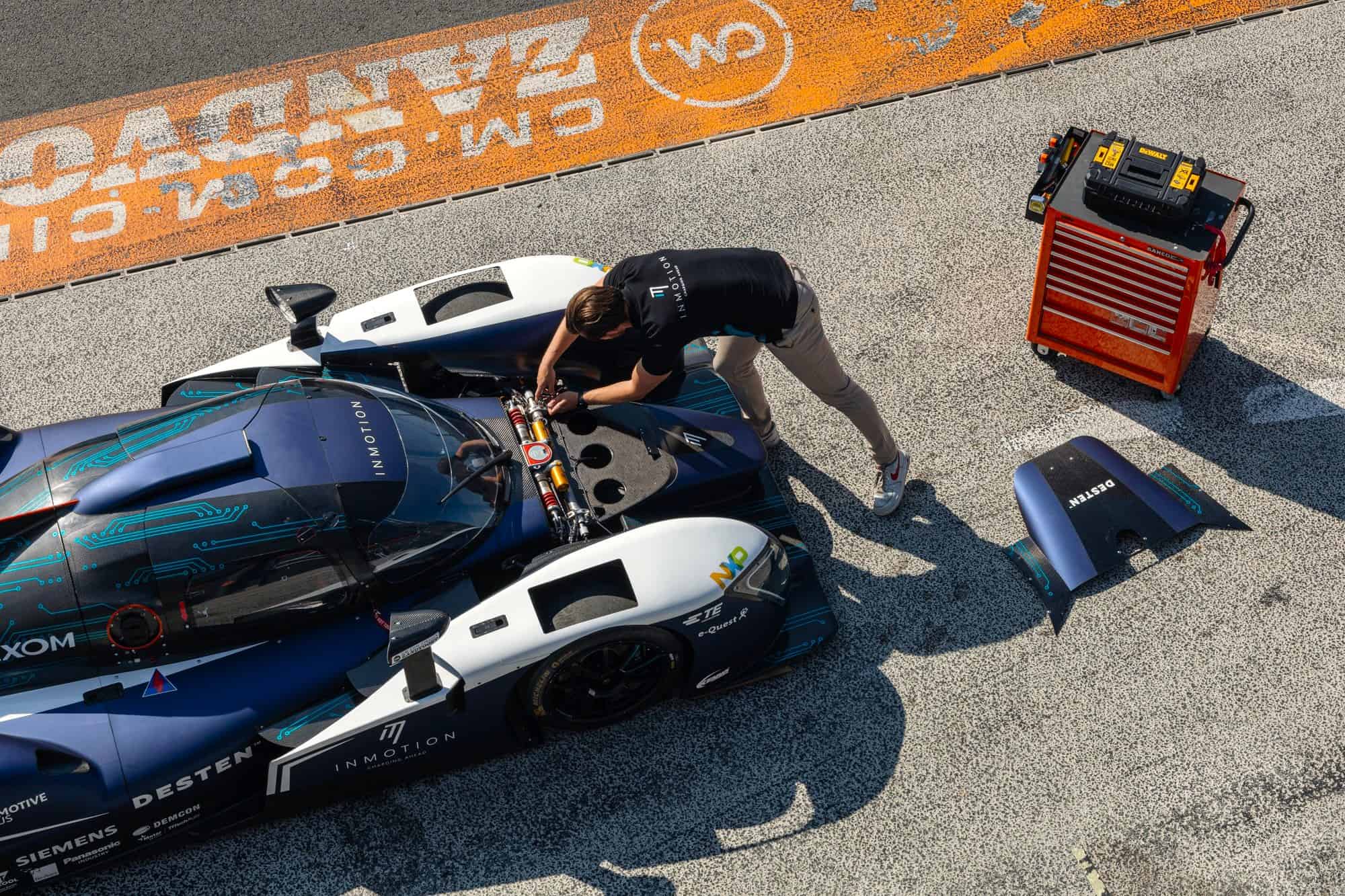
InMotion is working on an electric race car with the fastest charging time in the world. The student team from Eindhoven University of Technology (TU/e) has a complete workshop with an office at the Automotive Campus in Helmond. When I walk in for an interview at the appointed time, I find myself in the middle of a meeting. Everyone moved their desk chairs to the center of the office. Plans hatch from this circle, and the team has plenty of ambitious ones.
The Revolution – the team’s race car – charges in less than four minutes, three minutes and 56 seconds to be precise. So, what is the secret to a super fast-charging electric car? The battery pack and cooling system underlines Coen Hiddink, event and PR manager at InMotion. “We use battery cells from DESTEN, which are the most advanced cells at the moment. In addition, our self-designed cooling system, in particular, is an important factor for success. Batteries that charge quickly have to be properly cooled. Otherwise, it is hazardous,” says Hiddink.
Why this is important
Making mobility environmentally friendly is an integral part of the energy transition. With their drive and enthusiasm, students can make a significant contribution.
New cooling system
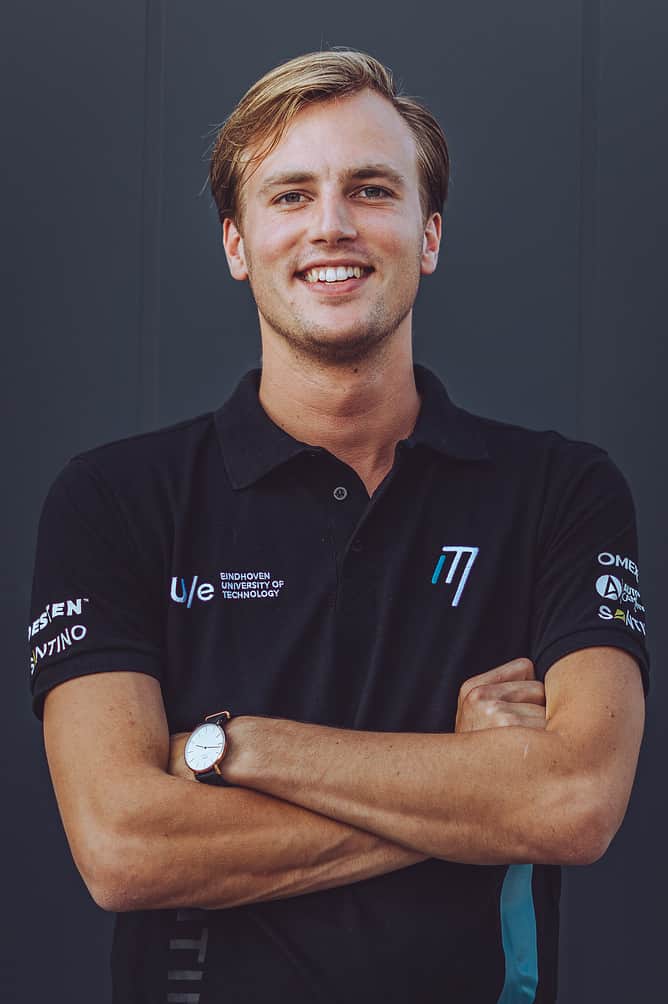
That’s why the team devised a new cooling system. “Normally, a battery pack is cooled at the edges. As a result, some cells are hotter than others. This is normally not such a problem, but this technique does not provide enough cooling in our car. Therefore, we cool the battery pack at the cell level. That way, all the cells stay cool, and there are no temperature differences,” he explains. The Revolution can be charged through the fast chargers available along the highway. So, no other charging stations are needed to charge the race car quickly.
Inspire
The goal of the race car? “We want to inspire the automotive industry and accelerate the energy transition,” Hiddink says. Every year, the team consists of a new group of students. They come up with new plans and goals. The team was founded years ago with the boyhood dream of competing in the 24 Hours of Le Mans with an electric race car. The competition is one of the toughest possible tests when it comes to the endurance of a car. “We still have that goal. We see racing as a means to test and promote our innovation. We want to accelerate the energy transition and inspire the public.”
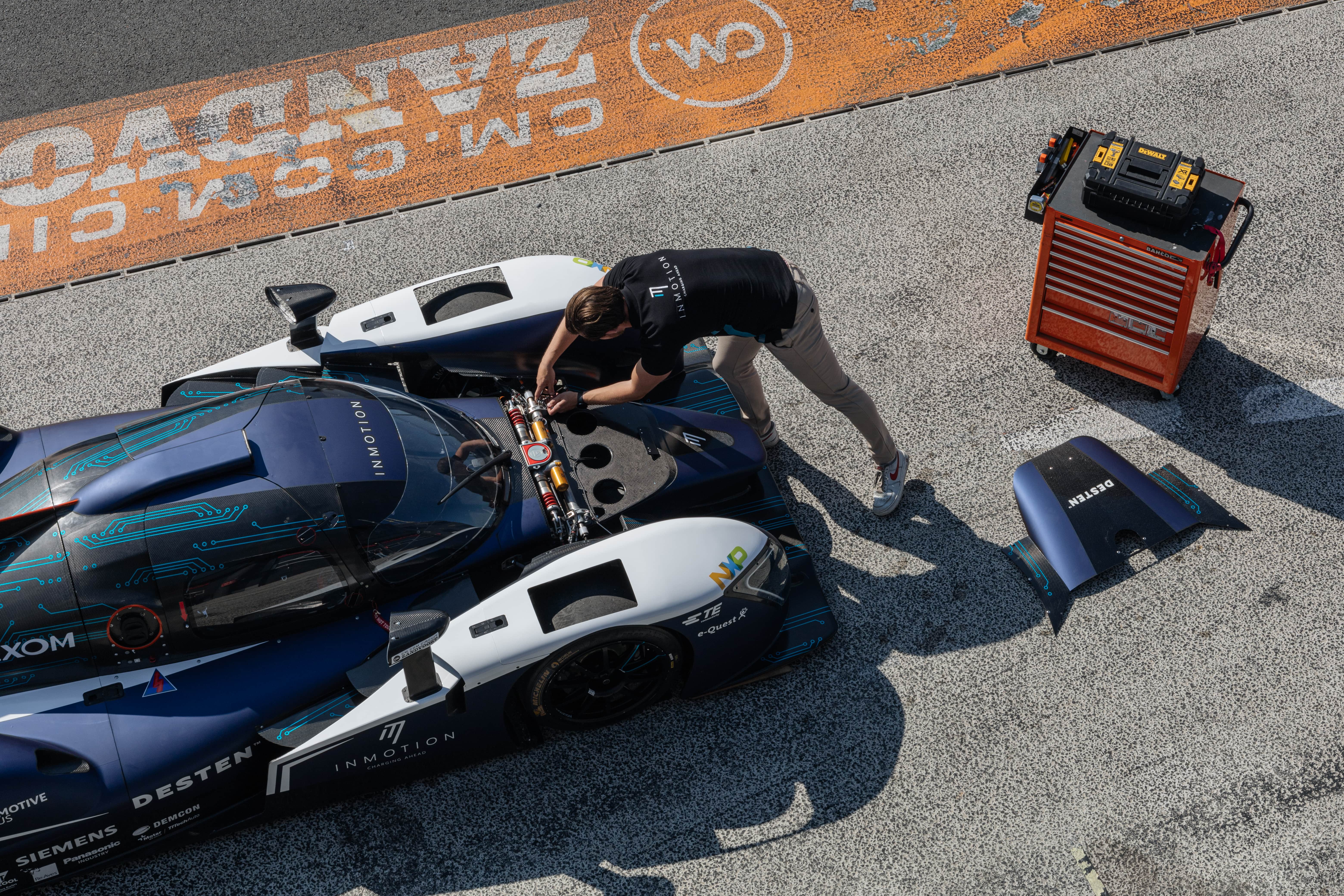
Local businesses also see a challenge in the race. InMotion has about eighty partners helping to develop the car. Sometimes, this involves financial support, but companies also provide working materials and consultancy hours. “They get excited by the drive of students, which is nice to see. In addition, it is also a great way for companies to showcase new products. For example, the battery supplier DESTEN can use our car to show what their battery cells are capable of,” says the PR manager.
From race car to passenger car
Eventually, the InMotion students hope the auto industry will adopt their technology. “The technology has been developed so that it can also be used in passenger cars. The battery pack we developed is still very expensive now, but that also has to do with the fact that this is the first version. That may change in the future.”
The number of electric vehicles is growing rapidly, but according to Hiddink, many people still hesitate about buying a plug-in car because of the charging time, which is currently around twenty minutes in optimal conditions. “Eventually, the whole of the Netherlands will have to get rid of gasoline and diesel cars. So we also have to convince the people who don’t want the extra charging time,” he says.
In addition to technology, behavior
According to the student, it is a two-step process. “First, the innovation has to be at least as good as the conventional model to be widely used. Therefore, the charging time must be as close as possible to the time of a current refueling.” In addition, a change in thinking and behavior is needed. “Everyone is now very focused on driving as far as possible without recharging in between. But how far do you drive in a day? And how bad is it to charge a little more often if it only takes a few minutes? These are all things we can ask ourselves. Ultimately, the energy transition also requires a different attitude.”
Battery swap
Hiddink is convinced that many people do not need a large battery pack for long distances. “Many people can charge at home and work. It is also increasingly common to have charging stations in other public places. A large battery is then a waste of materials and cost,” he states. Many people only need a large range (distance a car can travel in one go) when they go on vacation. Hiddink does see ways to solve that problem. “I can imagine that in the future, you will drive to the garage for a vacation check and immediately have your battery pack upgraded to drive longer distances. That’s probably much cheaper than always driving around with a big battery.”
The students will prepare the car for racing over the next few months. “The previous team made sure the car was drive-ready. We are taking the step to racing this year, and that is quite exciting. During a race, there is a lot of pressure on the car. Vibrations also impact the batteries and the car itself. We are now going to investigate and test all that further. That is why we will regularly be on the circuit in Zandvoort. That is, of course, the best thing there is: to actually see your innovation in action.”
